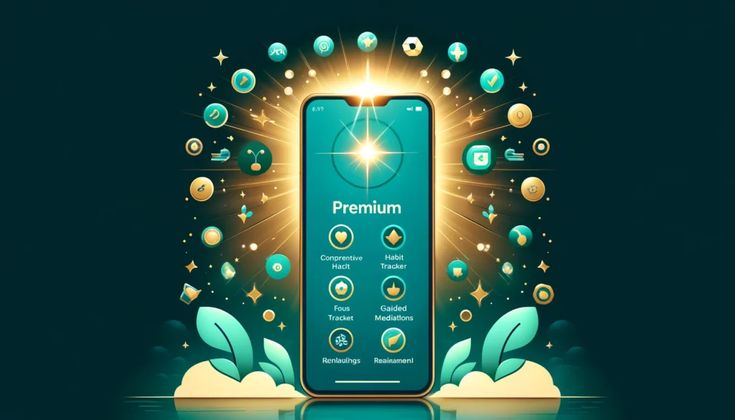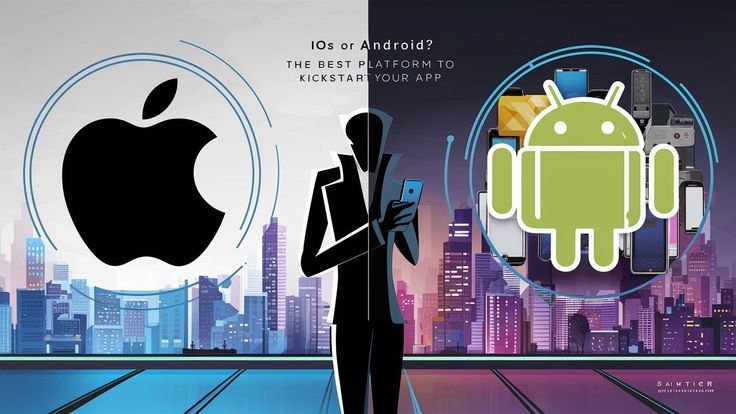In today’s highly competitive mobile app market, increasing your app downloads requires more than just creating a great product. Whether you’re launching a new app or looking to scale an existing one, achieving substantial app download numbers requires a combination of effective strategies and tactics. With millions of apps in the market, standing out can be challenging, but with the right approach, it’s absolutely achievable. This guide outlines the best strategies to increase your app downloads and drive sustainable growth.
1. Master App Store Optimization (ASO)
App Store Optimization (ASO) is the cornerstone of increasing app downloads. Similar to SEO for websites, ASO helps optimize your app’s presence on app stores (Google Play and the Apple App Store), improving its visibility in search results and driving more organic downloads.
Key ASO Strategies:
- Optimize the App Title and Subtitle: The title of your app is crucial for ASO. It should include your primary keyword and be memorable. For example, a fitness app might be titled “FitTrack: Custom Workout Plans.” The subtitle can expand on the app’s value proposition, giving users more reasons to download it.
- Craft an Engaging App Description: Your description should clearly explain your app’s key features, benefits, and unique selling points. Write in a way that speaks to your target audience, using language they will connect with. Make sure to use relevant keywords naturally, but avoid keyword stuffing.
- Use High-Quality Screenshots and Videos: Screenshots are the first things users see when they visit your app’s page, and they play a crucial role in decision-making. Make sure your screenshots are high-quality, visually appealing, and demonstrate your app’s features. Videos are even more engaging, as they can show potential users how your app works in action.
- Localized Listings: Localizing your app’s listing to different languages and regions can drastically improve your app’s visibility and downloads in international markets. Localized content, including descriptions, keywords, and promotional material, can help you reach more users globally.
By optimizing your app’s presence on the app stores, you increase the chances of it being discovered by users searching for apps in your niche.
2. Leverage Paid User Acquisition Campaigns
While organic growth through ASO is essential, paid campaigns can fast-track your efforts, bringing in users who may not have discovered your app through natural search. Paid user acquisition campaigns allow you to target specific user segments and drive targeted app installs.
Effective Paid Campaigns:
- Google Ads: Use Google Ads’ Universal App Campaigns (UAC) to promote your app across Google’s vast network, including search results, YouTube, and Google Display Network. UAC automatically optimizes your campaign by showing your app’s ads to users who are more likely to install it. By leveraging Google’s machine learning algorithms, you can drive installs more effectively and at a lower cost.
- Facebook and Instagram Ads: Facebook Ads is a powerful platform for driving app installs. Use Facebook’s detailed targeting options to reach users based on demographics, interests, behaviors, and more. Instagram, as a visually-driven platform, is especially effective for showcasing apps with a strong visual appeal. Create compelling ad creatives that highlight the value of your app and encourage users to download it.
- Snapchat Ads: If your target audience is younger, Snapchat offers an excellent way to engage users with short, engaging video ads. Snapchat allows advertisers to create app install ads that link directly to your app’s listing, making it easy for users to download with a single tap.
- TikTok Ads: TikTok, with its rapidly growing user base, is an ideal platform for promoting mobile apps. TikTok’s native ad formats, such as In-Feed ads and Branded Hashtag Challenges, allow you to reach a large, engaged audience, especially among Gen Z and millennial users. TikTok ads are often viewed as less intrusive than traditional ads, resulting in better user engagement.
Paid campaigns, when done correctly, can significantly increase app downloads and user acquisition, especially when targeting the right audience.
3. Leverage Social Media Marketing
Social media platforms like Facebook, Instagram, Twitter, and TikTok are ideal places to showcase your app, build brand awareness, and engage with potential users. These platforms allow you to directly communicate with your audience, share valuable content, and promote your app in creative ways.
Social Media Strategies:
- Content Creation and Engagement: Share informative, engaging, and entertaining content that resonates with your target audience. Create blog posts, infographics, tutorials, and videos about your app’s features, success stories, or use cases. Engage with your users by responding to comments and initiating discussions.
- Hashtag Campaigns: Hashtags increase the discoverability of your posts, helping you reach a broader audience. Create a branded hashtag and encourage users to use it when sharing their experiences with your app. Consider running a contest or giveaway as part of your hashtag campaign to increase engagement.
- Influencer Marketing: Influencer marketing can be incredibly effective in driving app downloads. Collaborate with influencers who align with your app’s values and target audience. Influencers can authentically promote your app to their followers, who trust their recommendations. Micro-influencers, in particular, can drive better ROI because they tend to have more engaged audiences.
- Social Proof: User-generated content (UGC) is a powerful tool for social proof. Encourage your users to share their experiences with your app by posting reviews, testimonials, and screenshots. UGC helps build credibility and attracts new users who trust peer recommendations.
Social media offers a direct, low-cost way to reach your target audience and build a community around your app, making it an essential tool for increasing downloads.
4. Incorporate Referral Programs
Referral programs are a proven method for boosting app downloads. By encouraging your existing users to refer their friends and family, you create a viral loop that leads to more installs. Referral programs leverage the power of word-of-mouth marketing, which is incredibly effective in driving new user acquisition.
How to Implement a Referral Program:
- Offer Rewards: Incentivize users to refer your app by offering rewards, such as free features, discounts, or in-app currency. The reward should be compelling enough to encourage users to spread the word.
- Make Referring Easy: Provide users with a simple, user-friendly referral process. Allow them to easily share their unique referral codes or links via social media, messaging apps, or email.
- Track Referrals: Use tracking and analytics tools to monitor the success of your referral program. This will help you understand what’s working and optimize the program for better results.
Referral programs tap into the trust that people have in their friends and family, resulting in high-quality users who are more likely to stay engaged.
5. Run App Launch Campaigns
A strong launch is crucial to driving initial app downloads. Running a launch campaign that generates buzz before and during the release of your app can help ensure a strong start.
Launch Campaign Tactics:
- Teaser Campaigns: Build anticipation for your app by running teaser campaigns on social media or through email marketing. Create suspense by sharing sneak peeks, behind-the-scenes content, and countdowns leading up to the launch.
- Beta Testing: Allow a select group of users to test your app before the official launch. Beta testing helps you gather valuable feedback and fix any bugs or issues before the app is available to the general public. It also creates a sense of exclusivity, which can generate excitement for the full release.
- Launch Day Promotions: Offer special promotions, discounts, or bonuses for users who download the app on launch day. Create urgency by limiting the time these offers are available, encouraging users to act fast.
A successful launch campaign creates excitement around your app and drives initial downloads, which can result in increased visibility and organic installs.
6. Focus on App Retention to Drive Long-Term Growth
While acquiring new users is important, retaining them is crucial for sustaining growth. Apps with high retention rates tend to rank better in the app stores, which increases visibility and leads to more downloads.
Retention Strategies:
- Onboarding Optimization: A smooth, engaging onboarding process is essential for retaining users. Make sure users understand the value of your app and know how to navigate its features from the get-go. Keep the onboarding process short, interactive, and user-friendly.
- Push Notifications: Use personalized push notifications to engage users and encourage them to return to your app. Notifications should provide value, such as updates on new features, personalized offers, or helpful reminders.
- In-App Engagement: Keep users engaged by offering personalized content, exclusive rewards, or social sharing features. The more users interact with your app, the more likely they are to recommend it to others and continue using it.
By focusing on user retention, you ensure that your app stays relevant and valuable, leading to sustained growth and more organic installs over time.
7. Leverage Media and PR
Public relations (PR) and media coverage can give your app the exposure it needs to stand out in a crowded marketplace. Media outlets, blogs, and app review sites can help get the word out to a wider audience.
PR Strategies:
- Pitch to Journalists and Bloggers: Reach out to journalists, bloggers, and media outlets that cover app-related topics. Craft a compelling pitch that highlights your app’s unique features, user benefits, and why it’s newsworthy.
- App Review Sites: Submit your app to reputable app review sites. A positive review from a trusted site can drive significant traffic to your Play Store listing and result in more downloads.
Media and PR coverage can help raise your app’s profile and attract new users who may not have discovered it otherwise.
Conclusion
Increasing your app downloads on the Google Play Store requires a combination of strategies that encompass technical optimization, marketing campaigns, and user engagement. From mastering ASO and leveraging paid user acquisition to utilizing social media and referral programs, each tactic plays an essential role in driving visibility and installs. Focusing on retention also ensures long-term growth, which is key to maintaining a sustainable app business.
Ultimately, it’s important to track your progress and continuously optimize your strategies. By combining these strategies and keeping your users’ needs at the forefront, you’ll be well on your way to increasing your app downloads and achieving long-term success.



